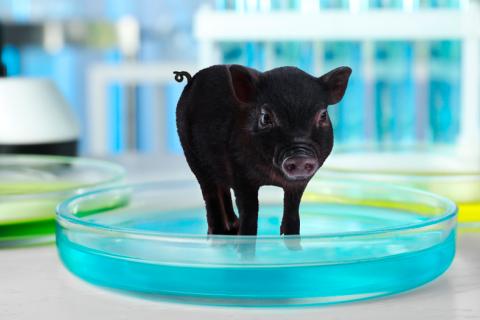
When the heart of a living being stops beating, the blood flow also stops and the tissues and organs do not receive oxygen and nutrients, which triggers a series of biochemical phenomena that destroy cells. Therefore, for an organ to be viable for transplantation, the time from when the donor is removed until it is transplanted to the recipient is a crucial factor.
Now, a team of scientists from Yale University has reached a milestone that can be a breakthrough for organ transplantation because it can keep the graft in good condition for longer. Specifically, they have managed to ‘resurrect’ some organs of pigs that had died an hour before.
To do this, they have used a new technology known as OrganEx, which is based on a mechanism similar to that of extracorporeal membrane oxygenation machines or ECMO, which carry out the activity of the heart and lungs, for example, during a surgical intervention, or in patients in critical condition, and that keep the organs oxygenated and functioning.
Hours after the death of the pigs, the researchers verified that very important cellular functions were still active in many areas of their organism, such as the heart, liver and kidneys.
The researchers induced cardiac arrest in the pigs and after an hour administered the treatment with OrganEx, a technology, which, as they have explained, consists of a perfusion machine similar to those that mimic the functions of the heart and lungs. during transplants, and by an experimental fluid that contains compounds that can maintain cell health and prevent inflammation throughout the animal’s body.
After six hours, they found that certain very important cellular functions were still active in many areas of the animals’ bodies, such as the heart, liver and kidneys. And they also managed to restore some functions in the heart, in which they detected evidence of electrical activity, so this organ maintained its ability to contract. “We were also able to restore circulation throughout the body, which surprised us,” says Dr. Nenad Sestan, another of the authors, explaining that usually when the heart stops, the organs begin to swell and collapse. of blood vessels blocks circulation.
It’s not a full resurrection, nor are they zombie pigs.
By being able to maintain the organs in good condition thanks to this technique, the availability time of an organ for transplantation could be extended. “All cells do not die immediately, there are a series of more prolonged events. It is a process on which some cellular functions can be intervened, stopped and restored”, explained David Andrijevic, from the Yale School of Medicine and one of the co-authors of the study, which has been published in the journal Nature.
In a previous investigation carried out by these same researchers in 2019, they had already managed to restore blood circulation and some cellular functions in the brain of a dead pig using a technology they called BrainEx. “If we were then able to restore some cellular functions in a dead brain, an organ known to be more susceptible to ischemia, we wondered if something similar could be achieved with other vital transplantable organs,” says Andrijevic.
The researchers wanted to make it very clear that the experiment did not produce a complete resurrection of the animals, and that they are not zombie pigs. “Our goal was to restore the functionality of some organs, so further study is still needed to understand the apparently restored motor functions in animals,” said Stephen Latham, director of the Yale Interdisciplinary Center for Bioethics and co-author of the study, adding: “We must maintain careful supervision of future research, particularly any that includes brain perfusion,” he says, referring to the ethical implications of such controversial experiments.
.